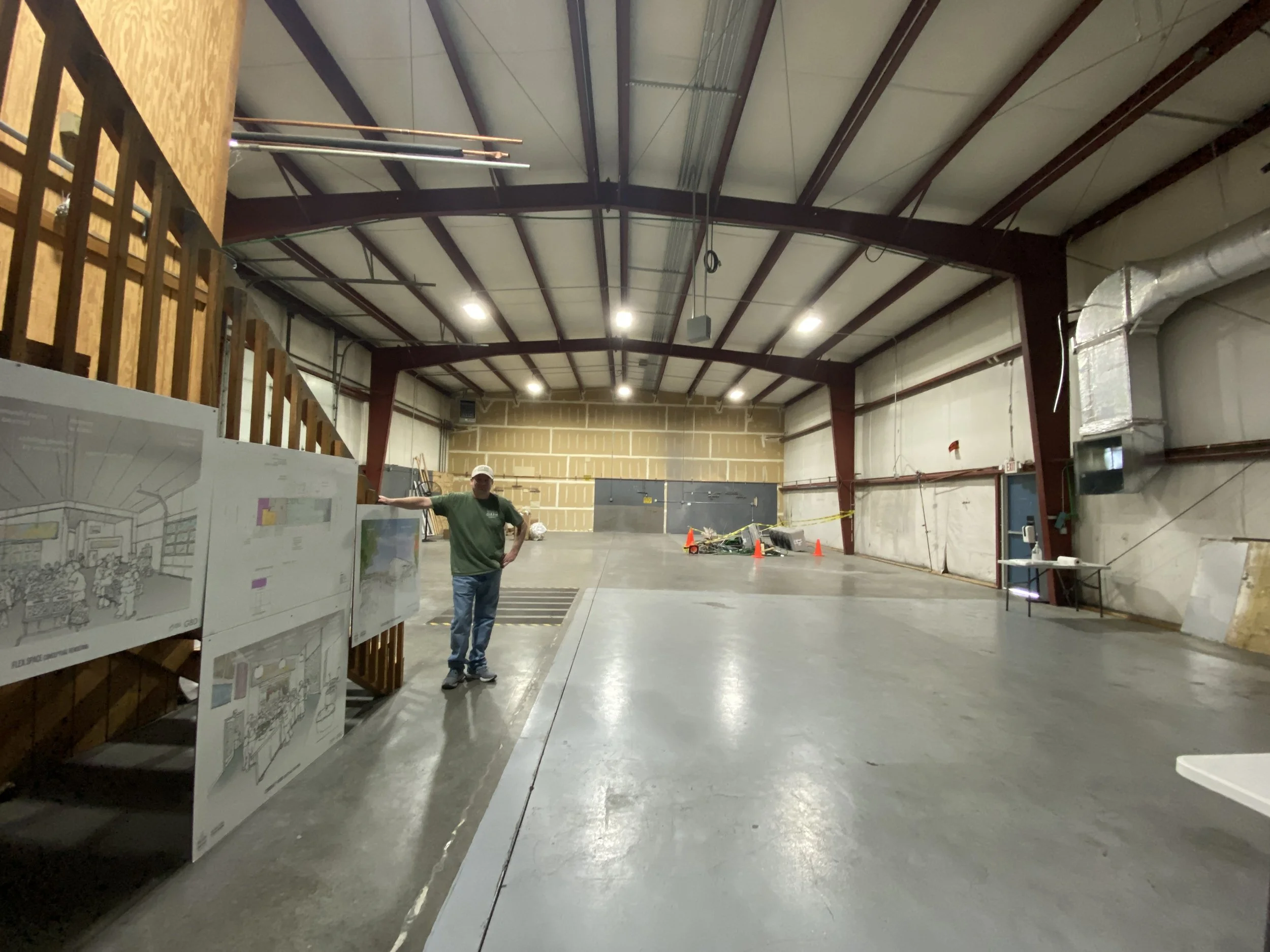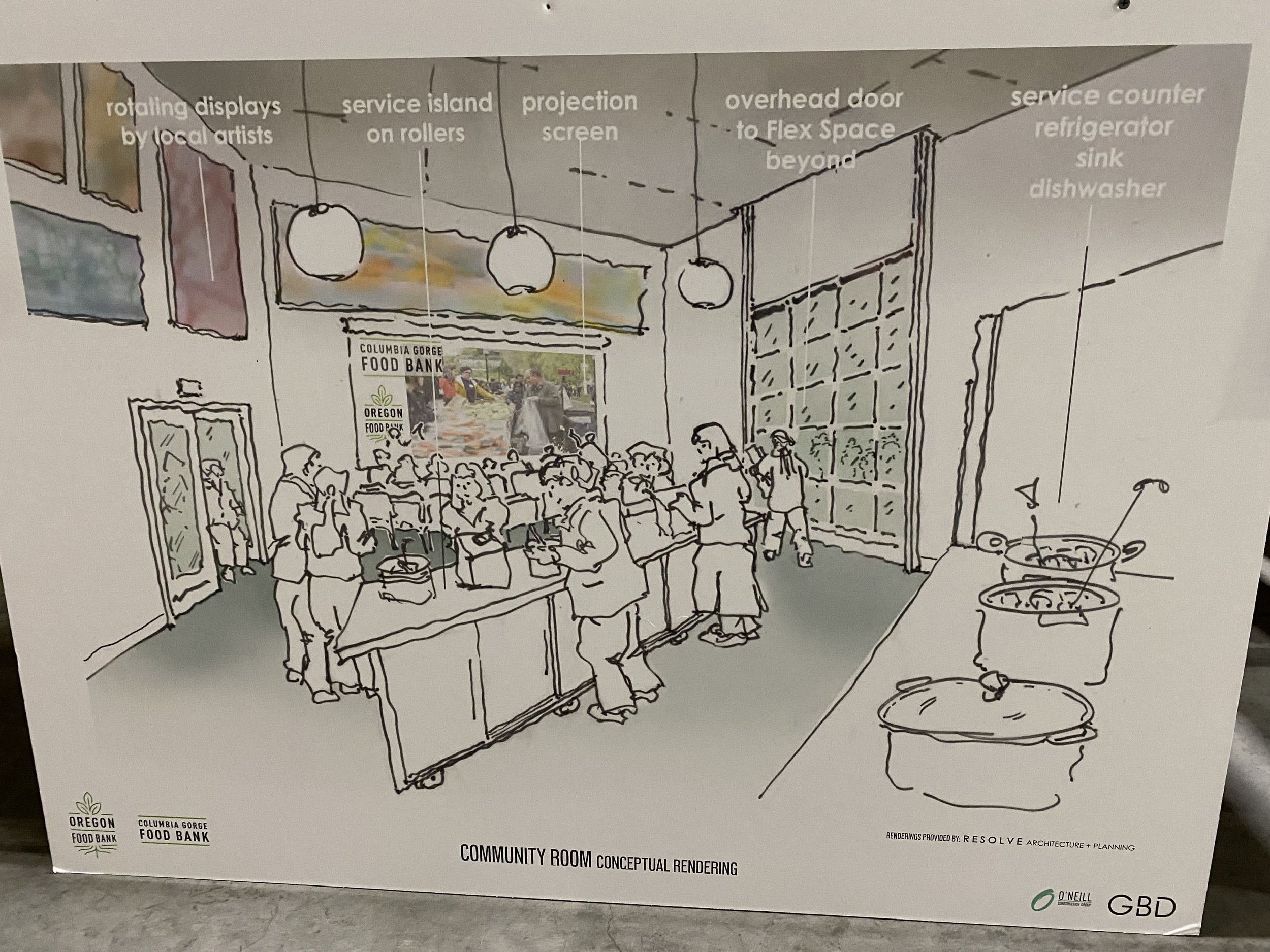Google Drops $100k on hunger relief in the Gorge
Inside the new digs for Columbia Gorge Food Bank. Major redevelopment of the steel building at 3525 Crates Way next to Fix Auto in the Port of The Dalles is set for the next several months, which will quadruple the Bank’s capacity to store food. It will also allow for buying in bulk and creating smaller packages of produce for families.
From Katie Bradshaw at C+C All About The Good, a public relations firm in Portland with edits and additions by Tom Peterson:
The Columbia Gorge Food Bank recently announced the expansion of several hunger relief programs and nutrition services across the region thanks in part to a new $100,000 grant from Google which operates data centers in The Dalles.
The grant comes as food banks across the country continue to cope with higher food prices which the USDA predicts to increase up to an additional 3 percent this year.
The support from Google will be used to provide more locally produced food to families in need across Hood River, Wasco, and Sherman counties.
Here is a rendering of the community room that will be built inside the warehouse in the next several months. It will provide a place to learn about nutrition in group settings.
“As we work to recover from the pandemic, rising inflation and the cost of food and fuel are putting more families at risk of hunger. With many temporary COVID relief benefits expiring, people are needing support more than ever,” said Sharon Thornberry, CGFB Manager and Rural Communities Liaison at the Columbia Gorge Food Bank. “But together with partners like Google and many others, we’re able to overcome these challenges and are continuing to work toward eliminating hunger and its root causes in the counties we serve.”
The last several years have underscored the critical role food banks play in building community resilience in times of crisis. The Oregon Food Bank Network reports that one in four Oregonians sought assistance during the pandemic. And according to Feeding America, food hardship is higher among BIPOC communities and households with children.
With the need for food assistance high, the Columbia Gorge Food Bank will use this grant to:
Provide Native American communities with culturally appropriate food and propane for storage and cooking.
Support community gardens and contracts with small farmers.
Build food security beyond emergency food assistance through partner collaboration.
Provide SNAP match funding at farmers markets to enable participants to purchase more food.
Purchase equipment and furnishings for a community room at the Columbia Gorge Food Bank.
“The Columbia Gorge Food Bank has provided leadership and invaluable guidance on how to strengthen our local food system,” said Kathleen Willis, South Wasco Alliance Board Chair. “Through our partnership, we’ve been able to open two new pantries serving South Wasco County, connect our small farmers to CGFB contracts, expand our community garden and food education programs, and support the opening of a new local farmers market this summer.”
The Columbia Gorge Food Bank serves over 5000 community members per month in Wasco, Hood River and Sherman Counties through 25 regional hunger relief partners, providing services at 33 local sites. Their reach has more than doubled in recent years and throughout the pandemic, they have taken steps to expand services to Native American and Latinx families, Farmworkers and rural communities including in South Wasco and along the Columbia River.
“We are proud to partner with an organization that is creating both short- and long-term food solutions,” said Kate Franko, Google’s Regional Head of Data Center Public Affairs. “This grant will help local families of all backgrounds by connecting them with sustainable, locally produced food.”
Click here to see CCCNews’ original story on the Food Bank Expansion.
—-
Google has called Wasco County home since 2006 when it opened its very first U.S. data center in The Dalles after negotiating deals for property tax abatements lasting 15-years. Many of its 200 or so employees live throughout the gorge.
In November, Google announced plans for future growth in the region. Under new agreements with The City of the Dalles and Wasco County, Google will have the option to build up to two additional data centers. The company also plans to utilize water resources from the local groundwater aquifer after acquiring water rights for 3.88 million gallons per day attached to the former aluminum plant site in The Port of The Dalles. It has also agreed to pay for $28.5 million of City water upgrades. The amount of water the company currently utilizes at its first three data plants is still currently held as a trade secret. City Officials will not release the information either.


